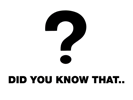Having
attended quite a few presentations over the past years, I can say today that
speakers do not pay attention to how they open their speech. Most people treat
their opening as any other moment of their presentation. However, we know that
people decide whether or not your ideas are worth listening to based on how you
start your speech. Think of how many times you looked for inspiring videos on
the internet and made a decision as to whether to continue watching a
particular video in the very first minute, or even seconds. Isn’t that true? We
decide whether people are worth listening to mainly based on how they
start.
So my
question for you is, what are the most effective ways to open a speech or a
presentation? How can you make sure that your audience do not switch channel? On a quest
to know the answer to that question, I started studying and following the
world’s best speakers to understand how they go about opening a speech. What I
found out is that the answer is not unique. There are many ways to start a
speech or a presentation in a powerful way. The one you choose depends on many
factors, such as the topic, the audience, the circumstances and the way you feel more comfortable with.
I think the
three most powerful ways to open a speech are the following:
- Tell a story
- Ask a provoking question
- Reveal a shocking statistic
(1) Tell a story
In this
talk, Andrew Stanton—filmmaker and writer of Toy Story—shares what he knows
about storytelling. And guess what, he starts by telling a funny story which then
leads him to introduce his topic. You do not have to tell a funny story, you
can tell a personal story or an emotional one. If you start by telling a story,
you bring down the wall between you and your audience by making a honest
connection with them.
(2) Ask a provoking question
Simon
Sinek—author of the book Start With Why—shares his Golden Circle theory explaining
how to become effective leaders and inspire change. His key message is that “people
don’t buy what you do but why you do it.” How does it start? How does he make
the audience care about his ideas? He asks a few provoking questions: “How do
you explain when things don’t go as we assume? Or better, how do you explain
when others are able to achieve things that seem to defy all of the
assumptions?”. The answer to those questions is his core theme.
(3) Reveal a shocking statistic
Since I
live in England, I know who Jamie Oliver is. He is celebrity over here. And I also had
the pleasure to eat in one of his restaurants. But I did not know he was so
passionate about how food can save peoples’ lives. The purpose of his talk is
to make Americans aware of how bad eating habits are killing them and their
children and how we can all transform the way we feed ourselves. How does he go
about making his audience care? He reveals a shocking statistic. “Sadly, in the
next 18 minutes when I do our chat, four Americans that are alive will be dead
from the food that they eat. My name’s Jamie Oliver. I’m 34 years old.” Before even
introducing himself, he shared a shocking statistic. As TEDx organizer Jeremey
Donovan wrote in his book How to Deliver a TED Talk: Secrets of the World’s Most Inspiring Presentations, one way to start a presentation is by sharing something unexpected that gets people
disrupted.
IMAGE: Evan Forester via Flickr














